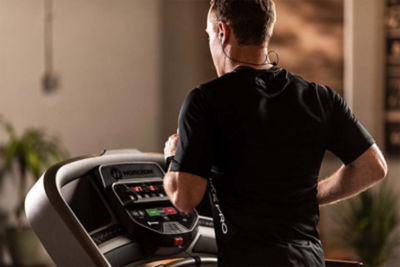When to Replace Running Shoes
Find out how often you should replace running shoes and what to look for when purchasing a new pair.

Elite runners share a deep connection with their shoes. With so many miles traveled and so much time and effort invested in them leading up to a race, they know that any signs of significant wear and tear on their favorite footwear can mean the difference between clocking a personal best and dealing with disappointment.
Regardless of whether you’re an experienced marathoner or a novice just running around the block, being aware of the condition of your shoes — and knowing when to replace them — is important to reaching your goals while also preventing possible injury.
For DICK’S Sporting Goods Associate Cathy Connor, a seven-time Boston Marathon competitor with 25 completed marathons to her credit since 2004, changing out her old shoes for new ones is crucial … no matter how hard it may be to say goodbye.
“You do bond with your shoes sometimes,” Connor said, laughing. “But it’s important to listen to your body and replace them when your feet and knees start needing a longer recovery time after a run. That’s when you know the cushioning [in the midsoles] has compressed, because there’s no more propulsion in your stride.”
TRACK YOUR MILES
To prevent soreness to your feet and knees (as well as shins, hips and lower back), Connor recommends treating a new pair of running shoes like a furnace filter in your home. Use a permanent marker to jot down the date of purchase/first use on a part of the shoe that won’t be worn off, and keep track of the miles you run to know when to swap them out.
Connor, a masters-level runner who logs approximately 30 miles per week recreationally and 45-60 weekly when training for a race, replaces her shoes roughly every three months. This frequency can vary, she said, depending on the running surface. For example, asphalt, dirt and crushed limestone are rougher on shoes than running on grass and can shorten a shoe’s lifespan. Water and mud can also play a factor. But on average, racking up 300-500 miles per pair is a good rule of thumb.
Connor added that knowing your gait is key for gauging the deterioration of your shoes’ soles and uppers.
KNOW YOUR FEET
The majority of runners experience some pronation (inward roll) and supination (outward roll) during their strides, based on the natural motion of the foot and ankle upon impact with the ground. This weight transfer from the heel to the forefoot and toes during forward propulsion can become exaggerated, however, leading to overpronation or oversupination and uneven treadwear on the inside or outside edge of the shoe.
In addition, look for wear along the ankle collar or the toe box, as these parts of the fabric mesh upper may become frayed or stretched from continual contortion of the foot.
“Once you know your gait, you’ll have a familiar baseline that will help you determine when to replace your current shoes and the ones you’ll wear in the future,” she said.
With this in mind, here are a few more tips from Connor to extend the life of your current or future running shoes:
GET FIT
Consider getting a professional fitting and gait analysis by a trained Associate at a DICK’S Sporting Goods store. They’ll help you find a model best suited to your expected use and type of stride (i.e. stability shoes for enhanced support to counter overpronation or oversupination, neutral shoes for more normal gaits).
CONSIDER AN UPGRADE
Although most factory insoles are fine, investing in a pair of high-performance models or having custom orthotics made that are tailored to your feet can make a difference. These offer superior cushioning for a more comfortable run while providing better heel support for more even, all-around wear. They’re also interchangeable from one pair of shoes to the next.
“Remember that your foot’s arch can change over time due to age or weight,” she said. “So having the best materials inside the shoe can make a difference. If you can afford this purchase, it’s worth it.”
DOUBLE UP
Found a particular pair of shoes that you really like? Consider purchasing two or more pairs of the same model the next time. You’ll extend not only the lifespan of your investment, but your enjoyment of running, too. “Shoe companies are notorious for tinkering with tried-and-true designs every year,” Connor said. “If they work for you, and you can get them in multiple pairs, do it while you can.”
BONUS TIP
For running shoes that are lightly used and still have plenty of miles left within them, consider donating them to a shoe repurposing program to benefit those less fortunate.








